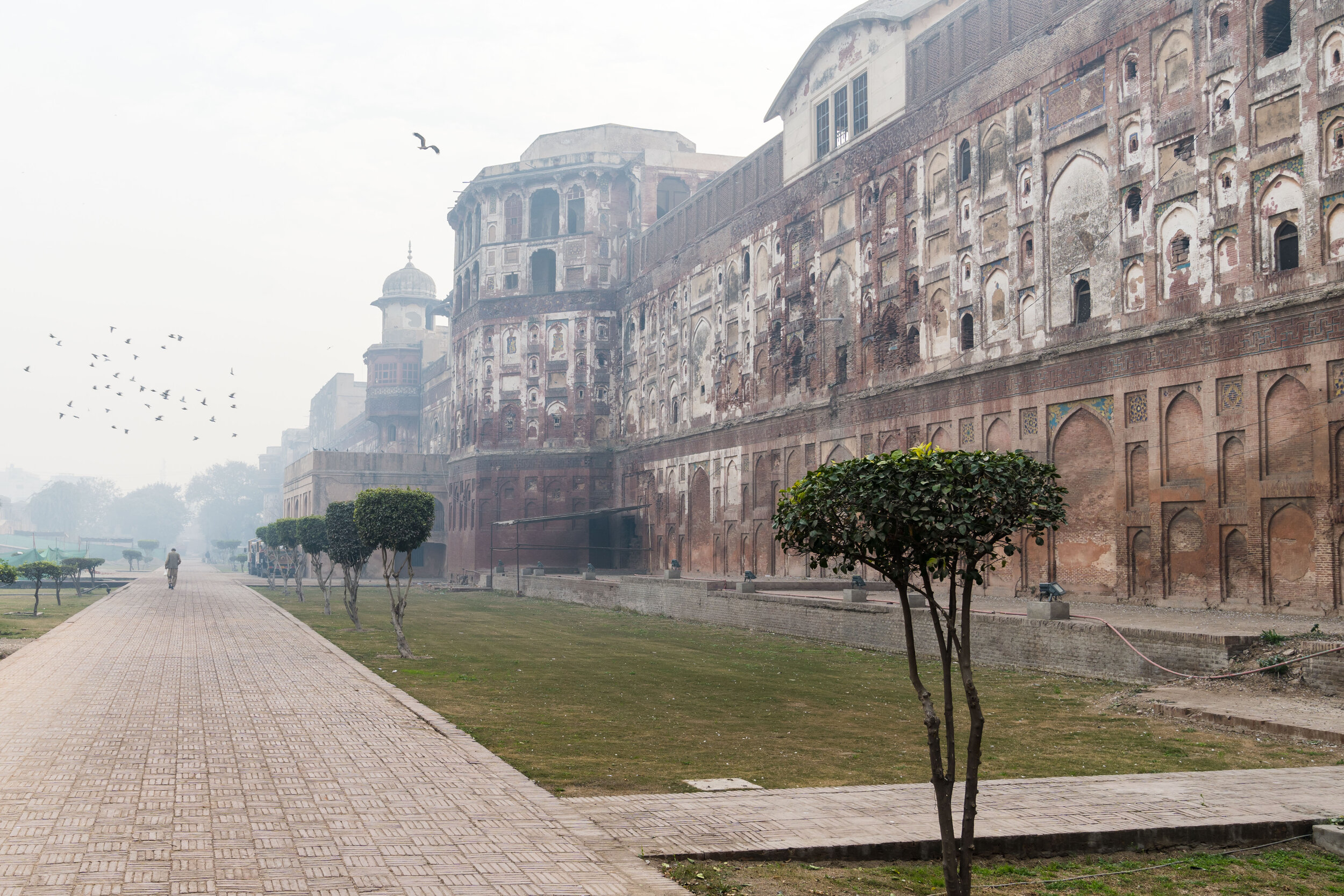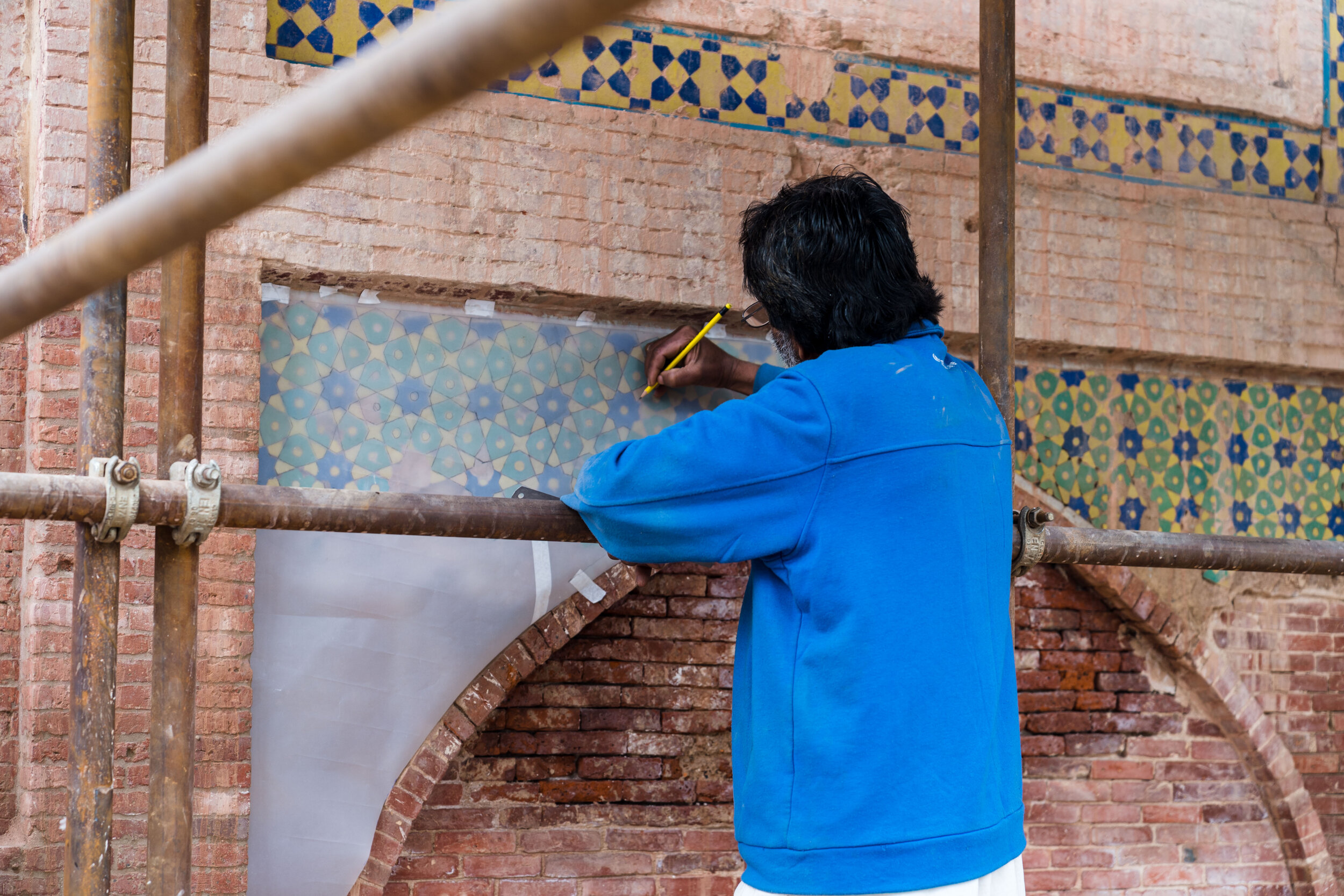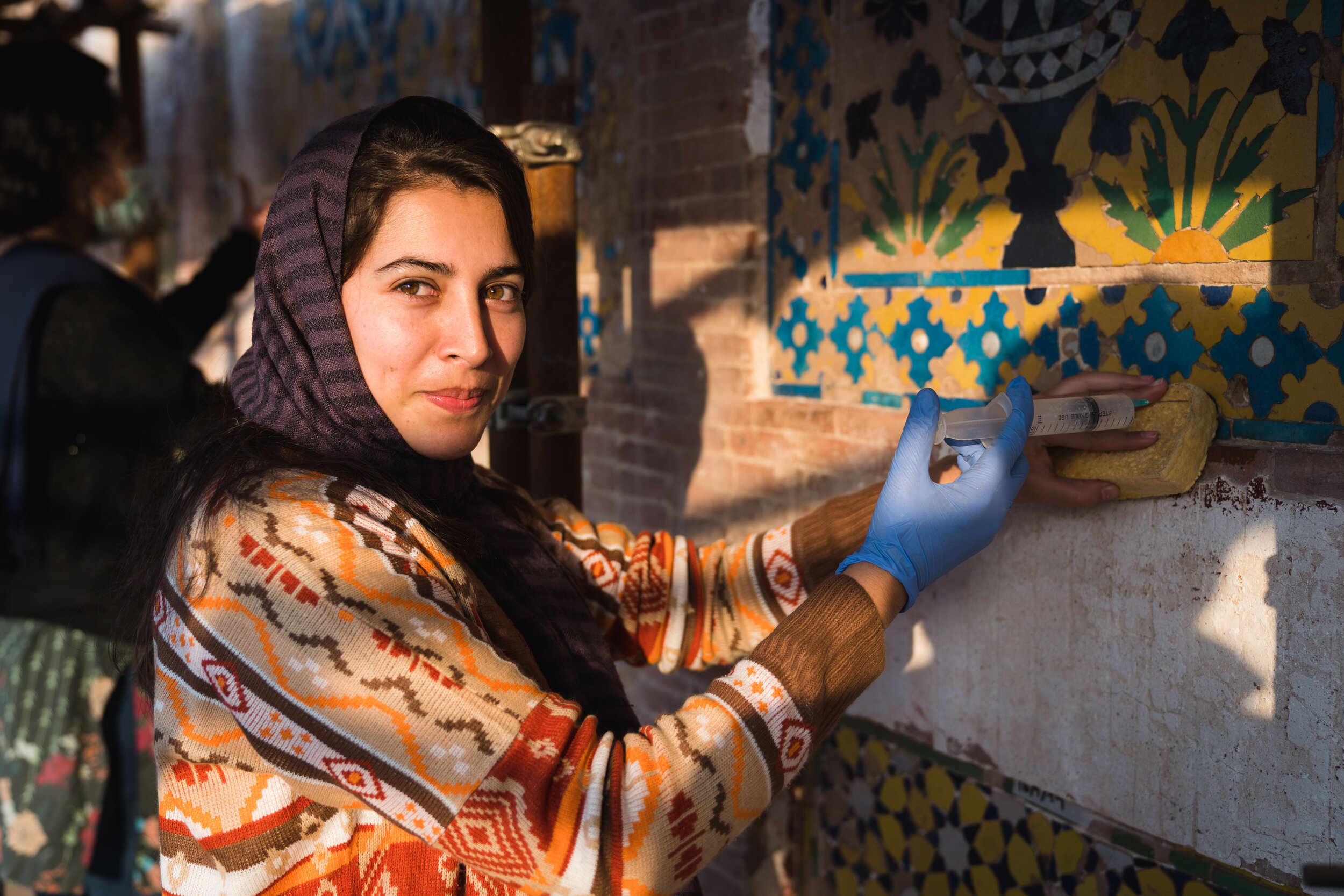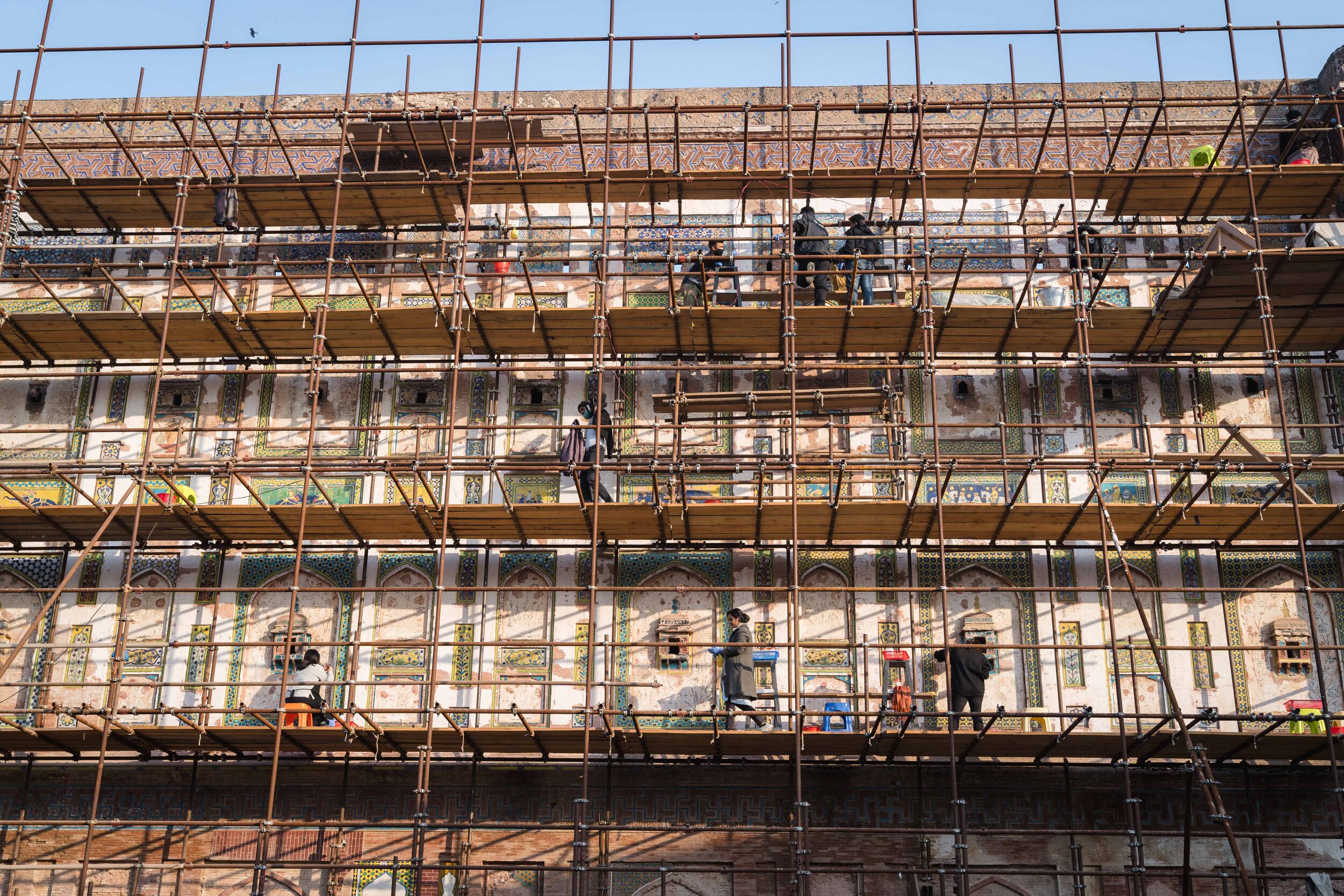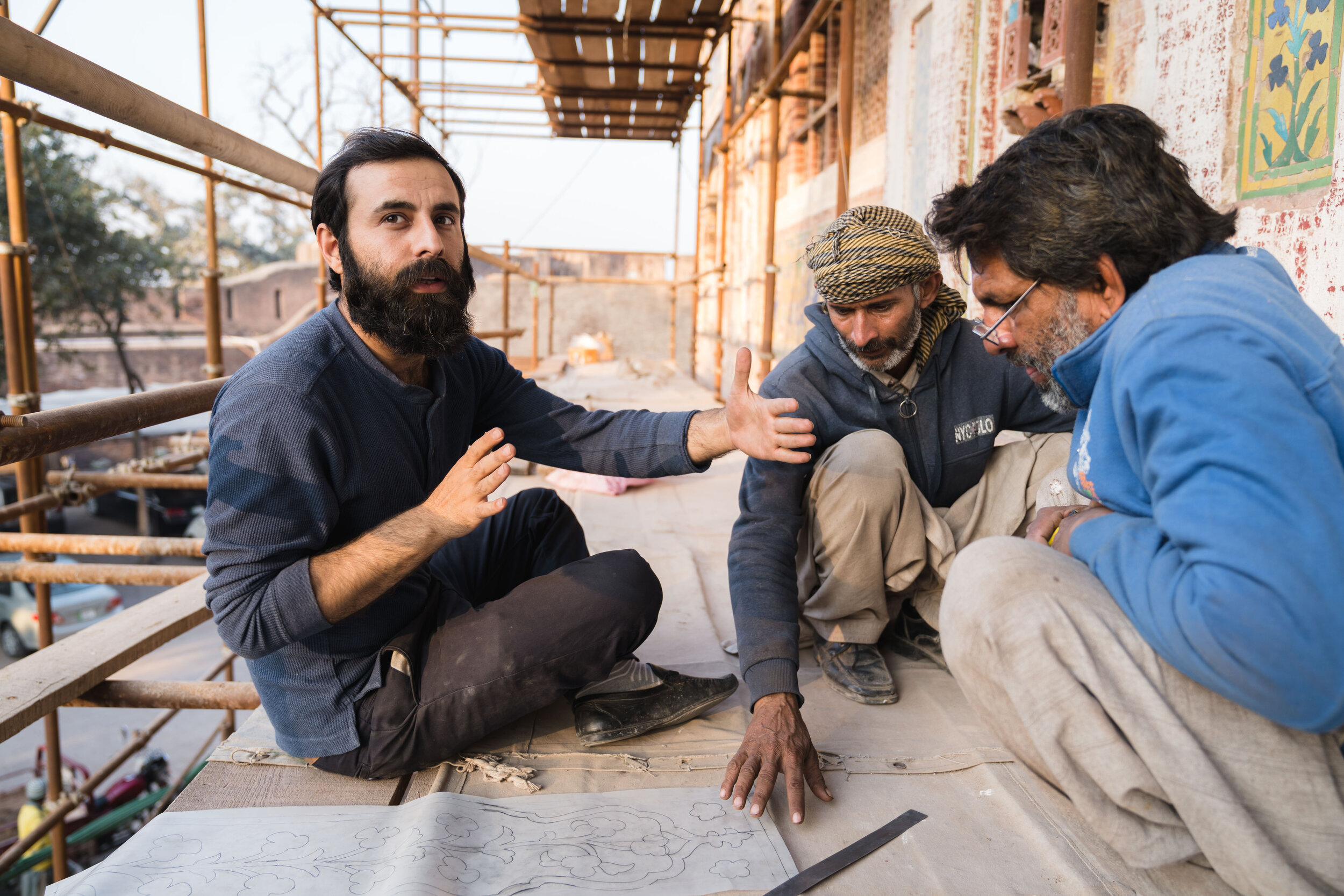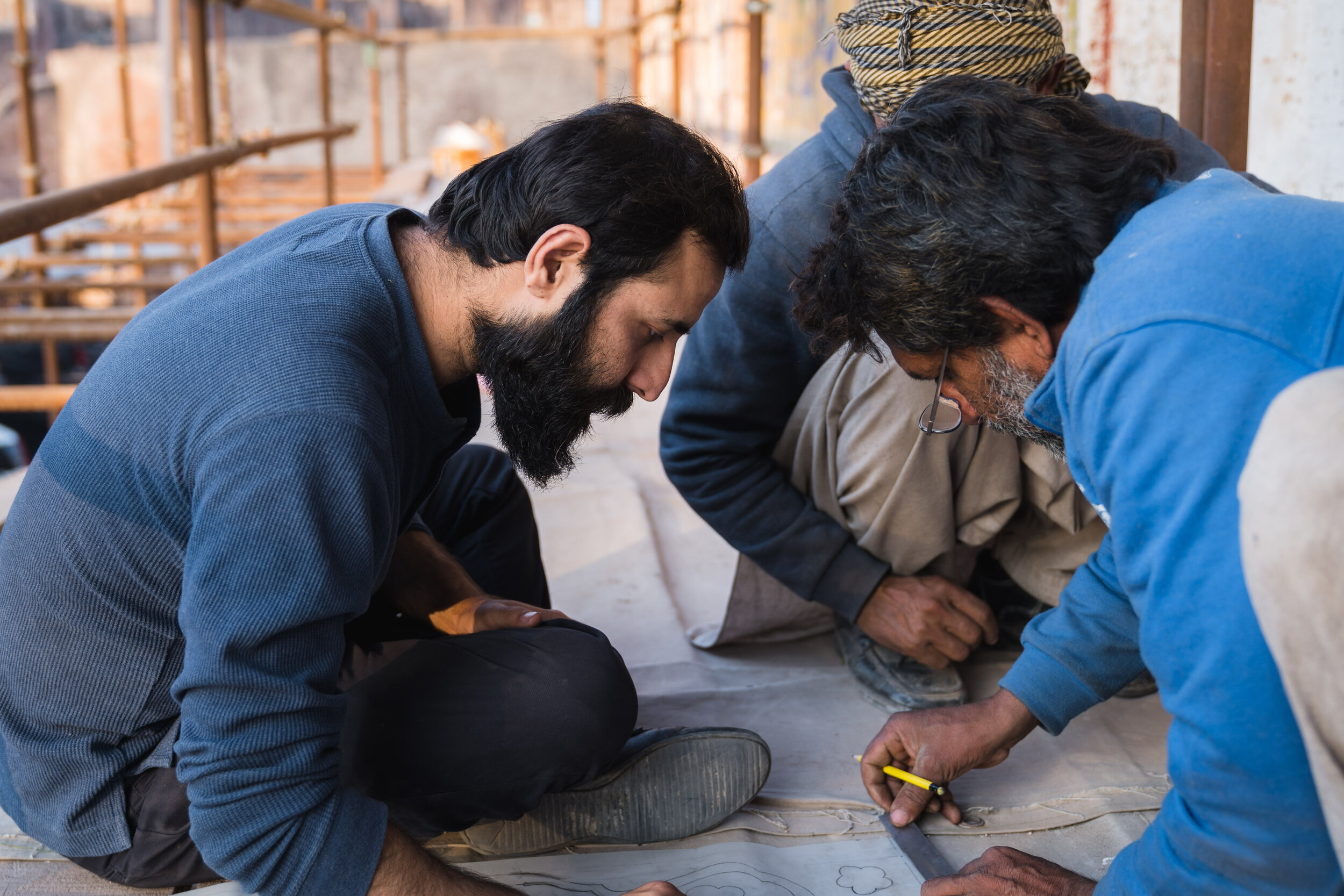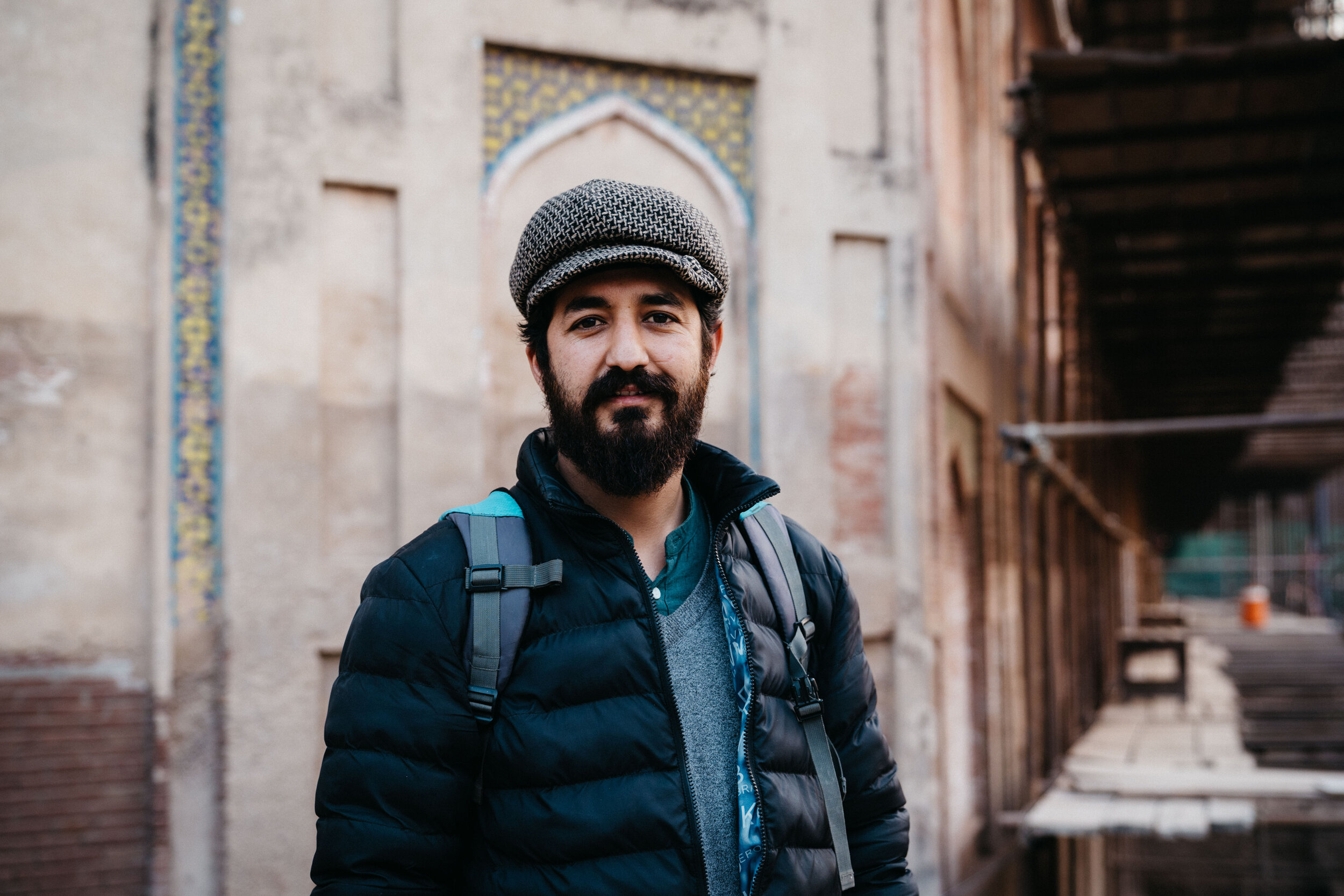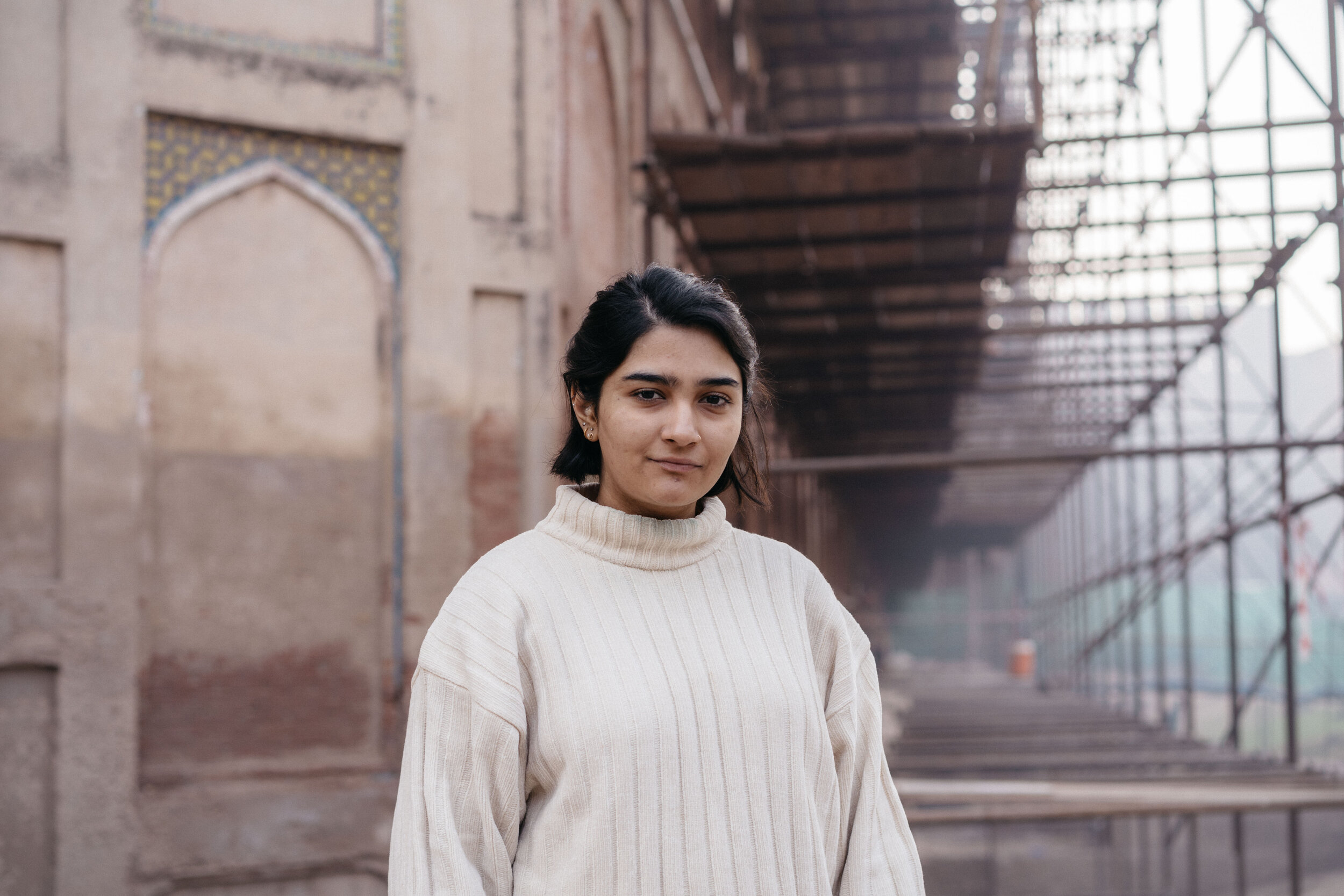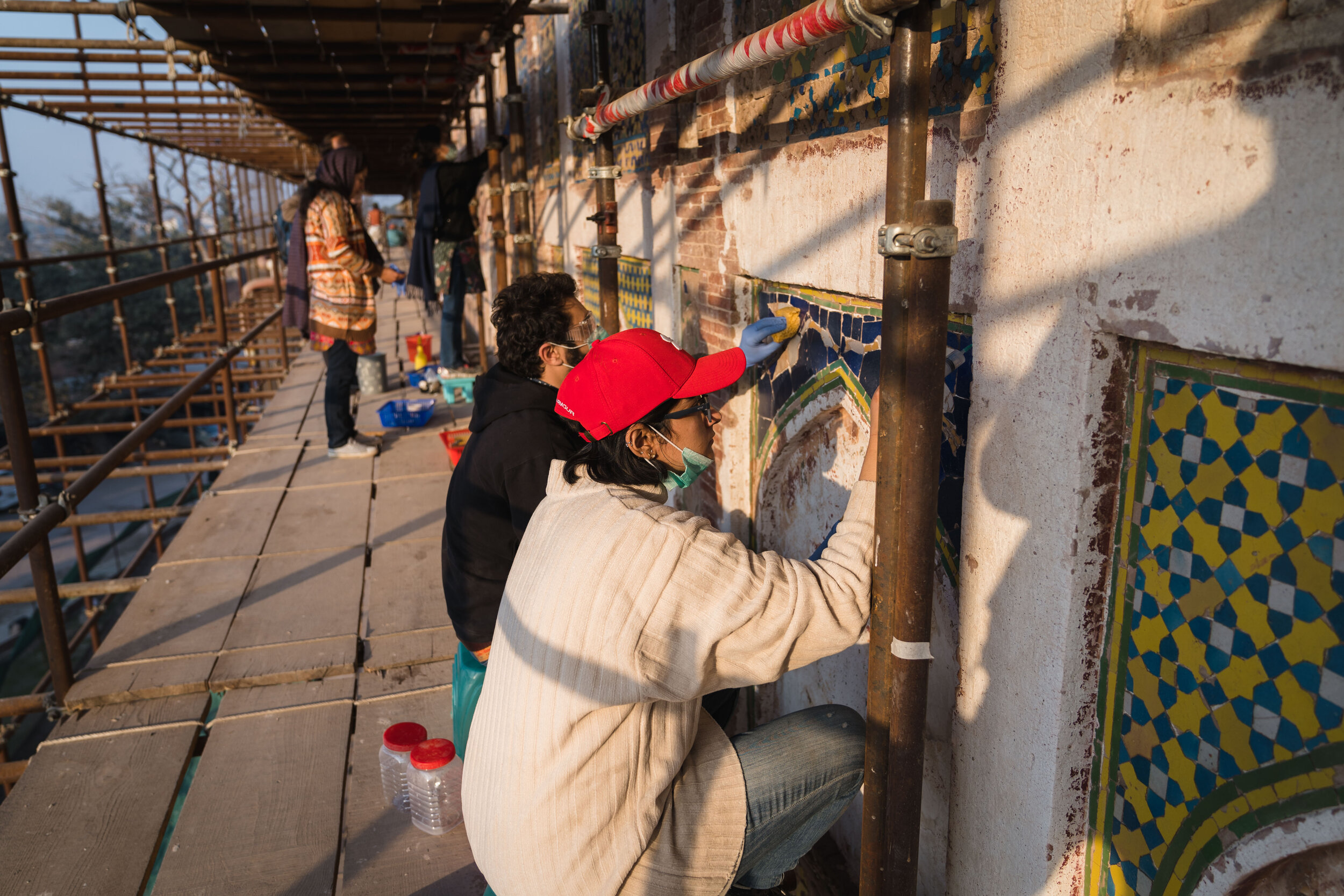Meet the young Pakistanis conserving Mughal heritage in Lahore (part 2)
Architects, art historians, engineers, fine artists, chemists, conservators, and ceramists make up the constellation of skilled young people working for the Aga Khan Trust for Culture (AKTC) on one of the largest restoration projects in Pakistan.
The 17th century Mughal-era Picture Wall in Lahore’s Walled City has been in a state of decay for over 100 years but thanks to the efforts of the Walled City of Lahore Authority, international donors and the infectious energy of this young team of conservators, the wall is being brought back from the brink.
The first phase of restoration of this UNESCO world heritage site - some 50 metres - was completed at the end of March 2019 and was inaugurated by Prime Minister Imran Khan. The remaining 400 metres of this awe-inspiring structure will take a further decade.
I spoke with some of the team working on this project to understand why this restoration work is so important to them and to Pakistan.
Ifrah Asif, 25
Ifrah has been working as a Conservator on the Picture Wall for the last six months. Her primary responsibility is the surface treatment of the wall; cleaning it and stabilising the glaze work. Previously she studied architecture at the National University Of Science & Technology, Islamabad. She was always interested in the heritage of Pakistan and Lahore and wanted to work on a heritage project.
“In Pakistan, AKTC is the largest organisation working on historical buildings and neighbourhoods so this was a big opportunity for me. When you study historical buildings you learn so much about historical techniques, construction, and design which you can then use in contemporary designs. We have these practical precedents which have been successful so why not learn from them.”
”I believe in a kind of architecture that helps solve certain problems for people. I am from Multan where it is very hot climate. In Pakistan we have an energy shortage so I don’t believe on relying on air conditioning. I started researching vernacular traditional techniques to combat that kind of climate. In the old city in Multan the streets are very cool as they are built in a way to channel the wind and the houses are built in a certain way with higher roofs and ventilators to keep them cool; they use natural methods to cool hot climates. If we could learn from that and implement it in contemporary architecture, I think it would be very successful.”
"It is important to conserve these sites because this is what represents us. It is our culture. In order to represent ourselves on an international level we have to preserve these identities.”
Wajeeha Arshad, 27
Wajeeha, a Lahori from the Walled City, thought she would follow in her sister’s footsteps and become an accountant. But when she started working with AKTC as an intern in 2009 she became very interested in conservation work and quickly learnt how to do technical drawings, use AutoCad and other skills. She was inspired by the work and decided to study Architecture at the National College of Arts, Lahore. She has since worked on the restoration of the Shahi Hammam and the Wazir Khan Mosque and now on the Picture Wall.
“It is really important to keep our heritage intact. Heritage is important as you get to learn about your past and how people used to live.”
Adil Khan, 27
Originally from KPK, Adil, who studied Ceramics at the National College of Art in Lahore, is working on the conservation of ceramic tiles, decoding the old patterns and geometry and recreating the original Mughal-era stone based materials, glazes and oxide pigments.
“If we don’t preserve this wall, in fifty years maybe nothing will be here and people will never know about these crafts such as filigree work, tile mosaic work, frescoes which you can’t find elsewhere. It’s important for people to know about the ornamental work of their ancestors.”
Khush Ahmad, 28
Khush is from Hunza and has been working with AKTC for about five years. He studied Architecture at the National College of Art and Design in Lahore. Originally working on digital documentation, he is now working on the drainage and hydraulics system.
“I had seen AKTC’s restoration work of the forts and palaces in the northern areas, you can say these are life-changing projects as they also improved the living standards of the people who live nearby - I believe this is a major objective of conservation.
“People are thinking that conservation is a small field but it is interconnected with social aspects such as the revival of historical construction methods and income generation. For a sustainable society such kind of projects are crucial.”
Maryam Irfan, 23
Originally from Multan, Maryam has lived in many places inside and outside of Pakistan as her father is in the military. She started as an intern here last October and works on the scaffolding, helping with the hands on work such as glaze stabilisation whereby silicon dioxide/liquid silica is injected into the wall to prevent further deterioration and help preserve the tiles. She graduated last year in Jewellery Design and Gemmology.
“I’ve always be interested in history, as a little kid I would read about it. Not just Pakistan’s history but about the whole world. My cousin works here and she was always telling me about the project and I thought, I want to be a part of this. It’s amazing, isn’t it? It’s a wall that’s hundreds of years old and thousands of craftsmen have worked on it. There are layers and layers and layers - the Mughals, the Sikhs, the British all added something to the wall and now its our turn to work on it. This is all the evidence we have left of a bygone era. To preserve it is a lesson I guess, a reminder that this used to exist.”
Haider Ali, 28
Haider is from the Walled City of Lahore. For his studies, he first gained a Diploma in Associate Engineering and Architecture and then did a Bachelors in Civil Engineering and finally a Masters in Construction Management in Lahore. He started with AKTC as an intern working on the Wazir Khan Mosque project and now he works as a Site Engineer managing all site activities, recording the progress of the site on weekly and monthly basis.
“It is important as for our heritage and culture. This is a world heritage site so we want to protect and promote it.”
Tanveer Johar, 34
Originally from Hunza, Tanveer graduated in Civil Technology from Preston University, Lahore. He has been working with AKTC for eight years as a Project Engineer. He previously worked on the restoration of Khaplu Palace in Baltistan, initially documenting the whole palace. After that project he moved to Lahore to begin documenting the Wazir Khan Mosque and the Picture Wall.
“I’m interested in heritage, I want to conserve the heritage of Pakistan so that younger generations can learn about their history. It is not only important for Pakistan, it is important for the whole world.”
Fakhir Uddin, 24
Originally from Chitral, Fakhir gained a BA in English Literature from Chitral University. Fakhir is a procurement assistant and a historian also.
“It’s not just about preserving historic buildings but about preserving the skilled work that has been done in that period. This kind of project builds a community of craftsmen, frescos artists, masons, and other skilled people. This work is important for the people of this country but especially for the skilled people and for the labourers so that they can earn an income.”
